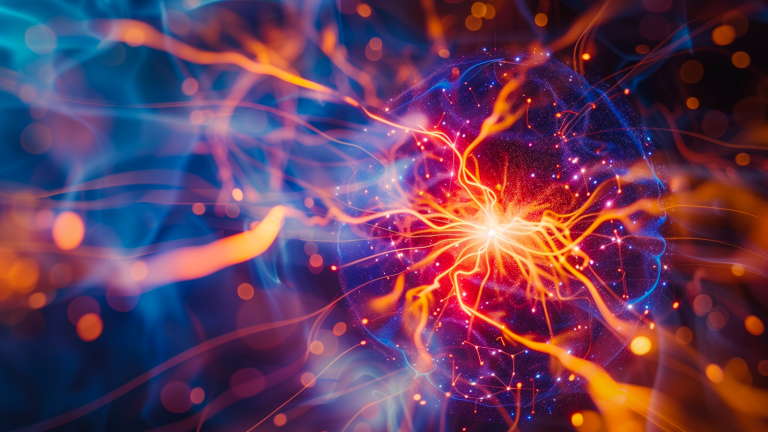In December 2022, inside a lab the size of a football field in California, 192 lasers fired simultaneously at a tiny gold capsule.
For a fraction of a second, humankind achieved what the stars have done for billions of years … we sent more energy out than in.
If this is your first time hearing about this, don’t feel as though you are uninformed … the world itself barely noticed.
Historians, however, might one day call it the spark that lit the fusion age.
Not long ago, fusion meant billion-dollar government labs and timelines measured in generations. But now, a handful of private startups (backed by tech billionaires and trained by AI) are racing to deliver working reactors before 2030.
In 1951, a little-known Argentine physicist named Ronald Richter told the world he’d achieved nuclear fusion. He hadn’t, but the dream he sparked never died. For decades, fusion has lived in the “always 30 years away” bucket. The dream was only that – a dream.
But something has changed in the past few years…
Now, one lab in Massachusetts claims it’s already cracked the hardest problem: the magnet. Seven decades later, Richter’s vision may finally be coming true, thanks to AI-guided magnets and machines that can learn the laws of plasma faster than humans can test them.
AI and high-performance computing (HPC) are colliding with breakthroughs in materials, magnets, and lasers, creating a realistic path to pilot plants and first commercial electrons far sooner than consensus thinks.
Which means the opportunity to invest in the holy grail of energy is fast emerging.
And it may be one of the biggest investment opportunities of our lifetimes.
So… let’s cover what fusion is, why it’s civilization-altering, who’s leading the race, how AI accelerates the timeline, the real near-term catalysts, and – perhaps most importantly – the best stocks to play the Nuclear Fusion Revolution.
What Fusion Is (and Why It’s Different)
Fusion fuses light nuclei (think hydrogen isotopes) into heavier ones (helium), releasing enormous energy because a tiny bit of mass becomes pure energy (E=mc²).
It’s how the Sun works.
Unlike fission (splitting uranium atoms), fusion produces no meltdown risk, no long-lived waste to manage for millennia, and uses widely available fuels derived from seawater and lithium.
In human terms: cleaner, safer, denser energy – 24/7, weather-proof, and abundant enough to power desalination, green industry, and insatiable AI data centers without torching the planet.
Two big routes dominate:
- Magnetic confinement (tokamaks, stellarators, field-reversed configurations): hold ultra-hot plasma with magnetic fields.
- Inertial confinement (lasers): compress tiny fuel pellets with monster laser pulses to trigger fusion.
In the past couple of years, we’ve seen genuine step-function milestones: LLNL’s National Ignition Facility repeatedly achieved fusion ignition (fusion output exceeding the energy delivered to the target), proving the physics pathway.
That’s not the same as a power plant, but it’s a profound validation that fusion reactions can be net-positive in the lab.
Why AI Could Pull the Future Forward
The short version: Fusion is a multi-variable nightmare: plasma instabilities, materials that must survive hellfire, magnets that push the limits of physics.
AI/HPC crushes complexity with:
- Faster plasma modeling & control: Machine-learning surrogates and hybrid physics-ML models can predict and tame instabilities, turning trial-and-error into rapid, data-driven iteration. Recent MIT work showcases ML-augmented models that better predict tokamak plasma behavior during tricky phases. This is exactly the kind of “control intelligence” fusion needs.
- Materials discovery: AI accelerates scouting for radiation-hard, high-heat-flux materials for first walls and divertors, and for high-temperature superconductors (HTS) in compact reactors.
- Digital twins: Full-stack reactor twins let teams test control strategies virtually before firing million-dollar shots.
- Government-backed compute: The U.S. just unveiled a $1B DOE–AMD program to stand up two AI supercomputers, Lux and Discovery, at Oak Ridge. Energy Secretary Chris Wright explicitly tied these “AI Factories” to accelerating outcomes in energy, including fusion. Translation: sovereign AI horsepower is being pointed straight at fusion’s hardest math.
When you connect those dots, the thesis writes itself: AI enables fusion, fusion powers AI, and both accelerate.
That feedback loop is why timelines the market thinks are 20-plus years out could compress into the 2028–2035 window for pilots and early commercial deals.
Who’s Building the Future (The Startup Landscape)
The fusion field is crowded, but only a handful of players show true near-term commercial potential or strategic firepower. Here’s a quick tour of the leaders you should know:
Helion Energy is leading with a magnetized-target fusion approach that operates in pulsed mode. It’s already signed the first-ever fusion power purchase agreement — a deal with Microsoft (MSFT) to begin delivering electricity by 2028, with Constellation (CEG) as the power marketer. Construction is underway in Washington state. Even if delivery slips, the existence of that PPA marks a genuine market milestone.
Commonwealth Fusion Systems (CFS), an MIT spinout, is building the SPARC tokamak as a pathfinder to its ARC power plant, a ~400 MW design based on high-temperature superconductor (HTS) magnets. These magnets are the company’s real edge, enabling smaller, higher-field reactors that could redefine scalability.
TAE Technologies pursues a field-reversed configuration (FRC) aimed at eventually using aneutronic fuels. Its long partnership with Alphabet’s (GOOGL) Google and a recent $150 million raise in 2025 make it one of the best-funded alternative approaches in the sector.
Tokamak Energy, based in the UK, is advancing spherical tokamaks and commercial HTS magnet systems — effectively selling the “picks and shovels” of the fusion age while refining its own reactor designs. With HTS supply emerging as a bottleneck, Tokamak’s dual focus on equipment and energy gives it valuable flexibility.
Zap Energy takes a radically compact route with its sheared-flow Z-pinch design, which requires far fewer components than traditional tokamaks. In 2025, the U.S. Department of Energy validated Zap’s first major milestone under its Milestone-Based Fusion Development Program, confirming sustained plasma shots on its Century platform — strong proof of execution despite unconventional physics.
Proxima Fusion, spun out of Germany’s Max Planck Institute (the team behind the Wendelstein 7-X stellarator), raised a record €130 million in 2025, later extended to €200 million. It’s fast emerging as Europe’s stellarator champion. Stellarators trade off pulsed operation for steady-state stability, making them increasingly attractive if magnet technologies scale.
Finally, Marvel Fusion and Focused Energy, both based in Germany, are pursuing laser-driven (inertial) fusion and benefiting from Europe’s new Fusion Action Plan — a national policy push toward pilot plants and industrialization. That political tailwind could prove pivotal for their suppliers and co-developers.
Bottom line: multiple credible shots on goal now span magnets, lasers, stellarators, z-pinch, and FRC designs. That diversity sharply raises the odds that someone reaches practical pilot status within the next few years.
Near-Term Catalysts That Actually Move the Narrative
And, as it turns, there are quite a few catalysts on the horizon over the next few years which could really ignite furious flood of capital into the nuclear fusion space:
- Microsoft–Helion PPA → construction milestones: Any permitting, construction, or commissioning progress at Helion’s Washington site is catalytic. Even small test outputs would be symbolic lightning bolts for public markets, because this is the first real offtake commitment.
- DOE’s AI supercomputers (Lux & Discovery): As these AMD-powered systems come online at Oak Ridge (Lux targeted around 2026), watch for published results in plasma control, materials, and reactor digital twins. Concrete wins here compress risk.
- HTS magnet & materials breakthroughs: Any announcements from CFS/Tokamak Energy or European labs on REBCO tape performance, cost curves, or cryo balance-of-plant efficiencies. HTS is the choke point for compact, high-field machines.
- EU/Germany funding awards: Germany’s Fusion Action Plan and related EU initiatives could green-light pilot programs, advancing Marvel/Focused/Proxima and pulling in a supply chain of lasers, cryo, vacuum, and metrology.
- NIF/laser results and diagnostics tooling: Repeated ignition shots, higher yields, and improved repetition rates breathe life into inertial approaches and the photonics vendors feeding them.
How to Invest (Now), Even Before Tickers Exist
The pure-plays are private. Retail folks can’t invest in those plays. But they can invest in the picks & shovels that:
- sell into fusion today (labs, demos, pilot plants), and
- win anyway from secular AI/electrification if fusion takes longer.
Here’s a few of those options…
1) Cryogenics, Vacuum & Industrial Gases (linchpins)
- Linde (LIN) and Air Liquide (AI.PA ADRs available) – Cryoplants, helium/hydrogen infrastructure, and specialty gases are must-haves for HTS magnets and test stands.
- Chart Industries (GTLS) – Cold boxes, hydrogen/helium handling, and cryogenic equipment for large-scale systems.
- Pfeiffer Vacuum (PFV.DE) and Atlas Copco/Edwards – Ultra-high-vacuum systems integral to plasma chambers and diagnostics.
These firms equip every pathway (tokamak, stellarator, laser, z-pinch). They’re also levered to semiconductors, LNG, and hydrogen, so downside is cushioned.
2) High-Temperature Superconductors & Magnets (the bottleneck)
- Bruker (BRKR) (superconductor unit), plus Japanese wire leaders Sumitomo Electric and Fujikura (via Japan listings/ADRs) supply REBCO/HTS: the make-or-break ingredient for compact, high-field reactors. CFS’s thesis (SPARC to ARC) is literally “HTS shrinks the plant.” If HTS scales, everyone wins.
3) Photonics & Lasers (inertial + diagnostics upside)
- Coherent (COHR), IPG Photonics (IPGP), nLight (LASR) – Beamlines, pump lasers, optics, and components across inertial fusion and cross-platform diagnostics. Germany’s push strengthens this optionality set.
4) Power Electronics, RF Heating & Controls
- Advanced Energy (AEIS), Monolithic Power (MPWR), Wolfspeed (WOLF), STMicro (STM), Infineon (IFX), Texas Instruments (TXN) – High-power semis, drivers, RF and plasma power supplies, metrology, and control. Fusion or not, this is the backbone of AI-era electrification and data-center power trains.
5) Compute Arms Dealers (the AI-Fusion flywheel)
- AMD (AMD), NVIDIA (NVDA), Hewlett Packard Enterprise (HPE) – The DOE’s Lux/Discovery systems are built on AMD platforms with HPE and partners; NVIDIA remains core to AI/HPC across labs. As AI supercomputers attack fusion’s hardest problems, these names benefit immediately—long before kilowatt-hours hit the grid.
6) Early Offtakers & Grid Integrators
- Microsoft (MSFT) – The Helion PPA created the category. Even symbolic delivery would be a narrative earthquake.
- Constellation Energy (CEG) – The energy marketer attached to Helion’s deal and a leading nuclear operator positioned to intermediate early fusion electrons and related firming products.
Final Word
Everyone’s obsessed with GPUs. Few are asking the obvious: what powers the machines that power the future?
The answer may arrive sooner than Wall Street models.
Fusion’s accelerating progress (amplified by AI’s compute cannon, hyperscaler offtake hunger, and government-backed industrial programs) points to a narrow but explosive opportunity set.
The winners won’t just be the startups racing to ignite fusion. They’ll be the toolmakers, integrators, and early buyers enabling the transition.
When the first fusion electrons hit a commercial meter, even in pilot form, the market narrative will re-rate overnight. The “holy grail” becomes a tangible growth story … and the investors already positioned in the enablers stand to see holy returns.
But the smartest investors aren’t waiting for that headline. They’re already positioning for the next surge.
That’s why I recently teamed up with trading pro Jonathan Rose for The Profit Surge Event, which aired this past Monday.
While I focus on long-term megatrends like the $2 trillion AI infrastructure buildout, Jonathan zeroes in on the surge points inside those same trends — the short-term moments when momentum and innovation collide. It’s how he’s nailed trades like +959% on Albemarle (ALB), +534% on MP Materials (MP), and +233% on Rigetti (RGTI) — all riding the AI wave.
Together, we revealed how to combine long-term conviction with short-term precision — the formula for turning breakthrough technologies like Nvidia’s (NVDA) AI empire into fivefold profit potential.
This is our blueprint for trading the biggest wealth event of our lifetimes.
Click here to watch the replay and see how to capture the next AI-driven profit opportunity.


